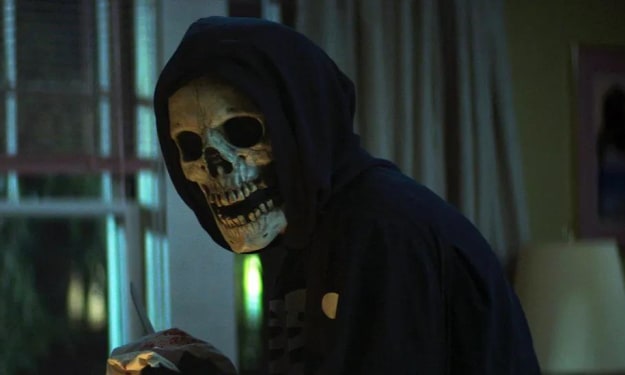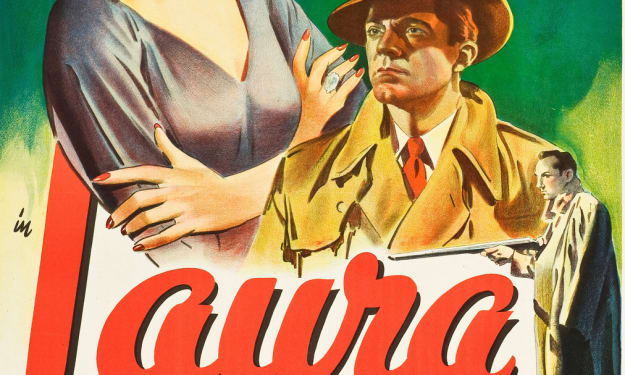
Francois Truffaut's romantic masterpiece Jules and Jim, which celebrated its 60th anniversary on 23 January, has long been a standard for filmmakers. Director François Truffaut's use of rapid cutting and relentless voiceover, alongside Georges Delerue's score, is so exhilarating and inventive that Martin Scorsese later admitted Goodfellas, Casino, and The Wolf of Wall Street were his attempts to replicate this brash cinematic freedom over an entire film.
But Jules and Jim is as much substance as it is style, exploring sex, friendship, love, masculinity, war and Paris in a poetic and often heart-wrenching manner. All of which it achieves while revolving around the most amicable ménage à trois in movie history.
"It's a very romantic film, without becoming a romantic comedy or a conventional romantic melodrama," explains Dr Richard Neupert, a French cinema expert and professor at the University of Georgia. "It's just very open-minded and not judgemental."
Story continues below
Over a 25-year period, starting before World War One, both Oskar Werner and Henri Serre's titular characters find themselves completely besotted by Jeanne Moreau's mesmeric Catherine. Even though it's Jules who is initially in a relationship with Catherine, Jim is just as fascinated by her spontaneity and zest for life. So when Jules and Catherine move to the Austrian mountains, get married, and have a young daughter, Jim is quickly able to recognise that she's unhappy.
Soon, Jim and Catherine can't ignore their feelings for each other. Rather than being mad, Jules is so concerned that Catherine might leave his life forever that he gives the couple their blessing. The four of them even live together for a while, until Jim and Catherine's struggles to conceive cause mental and emotional anguish.
While there's no denying the love and affection that permeates throughout Jules and Jim, as Lily Collins's eponymous character recently discovered during the second season of Netflix series Emily in Paris, it's just as tragic as it is romantic. In the fourth episode of the show's second outing, entitled Jules and Em, Emily goes to the famous Parisian cinema Le Champo to watch Jules and Jim. But while her colleague Luc calls its ending beautiful, as it makes their love "eternal", Emily is overcome by how tragic it is.
There's a good reason why Jules and Jim resonates with Emily so strongly. She is in love with her neighbour, Gabriel, the boyfriend of one of her only French friends Camille. Not only does this cause her psychological strife, it ruins her friendship with Camille and complicates her feelings for Gabriel. Emily's reaction to Jules and Jim is perfectly reasonable, though. A good love triangle film should make viewers reconsider their own thoughts on sex, relationships and love.
Emily in Paris's use of the love triangle proves that, even though the trope has been a mainstay of film and TV since they were invented, the storylines are so rife with inner and external drama and conflict that they'll continue to be used for many more years to come. But while Emily in Paris's pop-culture legacy is likely to be rather minuscule, there's no denying the impact that Jules and Jim's dabble with the genre had. Even now, the film's openness towards ménage à trois relationships – and Truffaut's non-judgemental view of Jim, Jules and Catherine's dynamic – still feels pioneering.
Experiments of style
"It has a very unusual openness in regards to this kind of relationship," explains Neupert. "Truffaut really wanted to make something that people would accept. But he also wanted to make it in the spirit of the French New Wave. He's playing with a lot of different traditions, influences and styles of filmmaking. That's why he threw in those stylistic devices, like the freeze frames. He wanted it to look like something that would fit alongside a Godard movie. But, at the same time, he wanted it to be timeless."
Rather than Jules, Jim and Catherine constantly being wrought with tension over the fact that they all love each other equally, they're able to discuss their feelings in a brutally honest way
The strength and nuance of the main trio helped to give Jules and Jim a universal appeal, despite the film's pioneering approach to its subject. "You feel sorry for each of the characters at different times," adds Neupert. "They're all fragile and vulnerable. But, at the same time, they're timelessly devoted. They can't stop themselves. It's a real contradiction."
It also helps that, rather than Jules, Jim and Catherine constantly being wrought with drama and tension over the fact that they all love each other equally, they're able to discuss their feelings and motivations in a brutally honest and refreshingly intellectual fashion. This immediately set Jules and Jim apart from most other movies that revolve around a ménage à trois.
"I see the structure of Jules and Jim as much different than love-triangle films that portray a female heroine with competing male love interests," says Dr Michele Meek, an assistant professor in film studies at Bridgewater State University. "Most love triangle films with a female heroine are something of a heterosexual female fantasy. Usually, they have multiple suitors to choose from. One is a very sexually dynamic character. The other is a more practical choice. They never meet someone who is both sexually dynamic and a practical life partner."
She points to The Philadelphia Story, Sabrina, It's Complicated and Bridget Jones's Diary as examples of a female character negotiating, and then ultimately choosing, her companion. Not only are these films from a woman's perspective, but Meek notes how the common storyline is usually about their "agency, choice, and exploring what's important to them in a partner". For Meek, though, "Jules and Jim is the opposite. It's the nightmare of never feeling satisfied, never feeling content in love or sex."
While critics might insist that most love triangle movies are predictable and even unrealistic, there are plenty of examples where they've managed to be charming, illuminating and even surprising for viewers. Especially when they've subverted expectations.
Casablanca's reputation has endured for nearly 80 years because, rather than Rick and Ilsa getting back together at the end, he helps her leave with Victor, giving it a bittersweet complexity that still feels relatable. In The Graduate, while Benjamin is able to stop Elaine's marriage, the final shot of them looking towards their uncertain future adds a poignancy that means its ending is still debated to this day. Even the death of Jack at the end of Titanic instantly added extra weight to his love story with Rose, and helped to prove that, despite it being fleeting, they were meant to be together.
Jules and Jim's influence can also be seen in films like Y Tu Mamá También, The Dreamers and Les Valseuses, to name but a few. The major difference is that these films explore the sexuality of its characters in a much more explicit manner. The purpose of their sex scenes, though, is to signal that its participants are either at, or are quickly approaching, their nadir.
"In film and TV, it's now not transgressive for characters to have sex out of wedlock or have affairs. These barriers have been broken. But, for whatever reason, the one for [threesomes] has maintained as firmly as ever," says Meek. "Ultimately it is not seen as the sustainable solution for a relationship. It might be shown in some kind of positive light for a while. But it is more often shown as a spiral into something much more disturbing."
In Y Tu Mamá También, after the tryst between Julio (Gael Garcia Bernal), Tenoch (Diego Luna), and Luisa (Maribel Verdu), the two male friends, who'd previously boasted about their sexual exploits throughout the film, never speak to each other again. At the end of Bernardo Bertolucci's The Dreamers, Isabelle (Eva Green) becomes so distressed that she is sharing her lover Matthew (Michael Pitt) with her brother Theo (Louis Garrel) that she attempts to kill the three of them. Meanwhile, Les Valseuses sees Moreau star as a woman just released from jail, who partakes in a three-way love scene with Gerard Depardieu and Patrick Dewaere's petty criminals.
Jules and Jim, it seems to me, is actually more of a tragic love story between the two male characters than a traditional love-triangle film – Michele Meek
For the first hour of Jules and Jim, the trio's relationship is idyllic. They're not shunned by society, as their bohemian friends are seemingly entwined in similar romances. While it's Jules and Catherine who are officially in a relationship together, Jim is just as emotionally invested. Plus, the mutual love and respect from Jim towards Jules means that he's reticent about getting involved with Catherine, too.
"Jules and Jim, it seems to me, is actually more of a tragic love story between the two male characters than a traditional love-triangle film," says Meek. "The title is, after all, the two men's names – it's their story. Catherine arrives as a disturbance and ultimately destroyer of their happy union."
But while there's plenty to celebrate about Jules and Jim, from its technical brilliance to the wit and excitement of its script, there are certain aspects that feel undeniably problematic when seen through a modern lens. Particularly when it comes to Catherine.
After marrying and having a child with Jules, Catherine has a prolonged affair with Albert (Serge Rezvani). She then decides to settle down and try for a baby with Jim. But when Jim starts to pull away, Catherine becomes increasingly forlorn and irrational. "It's almost as if the film says, 'Women are going to play by the same rules as men. But it doesn't really feel like they're cut out for it'," explains Meek.
"The film depicts Catherine's indecisiveness over the men as a sign of her mental instability and insatiability – which feels especially perplexing and sexist considering they call her a 'real woman'. In other love triangles, with heroines who have multiple men to choose from, it's more often suggested that she has more earnest reasons for having divided affections."
Catherine's flaws and self-destructive behaviour only make Moreau's performance even more impressive, though. Not only does she "refuse to fit into any of the simplified assumptions of what she's meant to do," says Neupert, but she's a liberated female character, which was extremely rare for cinema at the time.
As well as her work in front of the camera, Moreau contributed to the script, helping Truffaut with dialogue and characterisation. It has even been alleged that, by the middle of production, real-life had started to mimic art, as Moreau became romantically involved with Truffaut at the same time as she was rekindling her romance with her first husband, Jean-Louis Richard.
"Apparently, there was some tension on the set. Almost all the men were just so obsessed with her," says Neupart. "That just added a real and personal level to the film."
Sixty years on, the combination of Moreau's innate magnetism and Truffaut's directorial flourishes makes Jules and Jim feel as inventive, original and inspiring as anything that has been released since. But ultimately, the film's popularity can also be attributed to its subject. The romance, excitement, jealousy, disappointment and betrayal of the love triangle are what makes Jules and Jim so compelling – and so nuanced.
About the Creator
Wu Mu
Dreams are not limited, nothing can be achieved






Comments
There are no comments for this story
Be the first to respond and start the conversation.